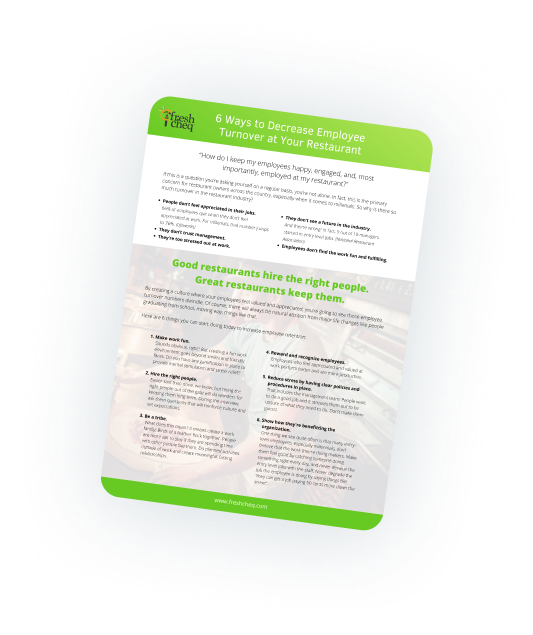Every restaurant owner wants to reduce restaurant food waste. That is because we understand that food cost is one of the biggest operating expenses. According to the United States Department of Agriculture Food Price Outlook report, food prices have increased 1.4% over the past year and are expected to continue to rise. Restaurant operators can raise menu prices and operate with a leaner staff, but there are a few other ways to manage restaurant food costs.
Through sales forecasting, goal setting, and imposing employee meal thresholds, operators can keep restaurant food costs in check. Plus, with an automated system to log and track food waste, restaurant owners can streamline processes for efficiency at the same time. Here’s a rundown on three ways you can reduce restaurant food waste today and track food costs in your restaurant.
1. Sales Forecasting
Sales forecasting allows managers to control food waste and also results in better management of employee scheduling, ordering, and prepping. Proper forecasting requires more than a quick look at your 60 day sales average. Keeping holidays and promotions in mind can lead to varying sales forecasts and without proper planning, there could be missed opportunity or excessive food waste. Consider seasonal changes, holiday and community calendars, competitor activity, weather, and menu mix forecasts in addition to regular sales cycles. Logging food waste can help with forecasting and allow employees to better plan with accurate amounts of prepped food.
2. Goal Setting
Establishing thresholds and ideal food cost variances for each store is one important way to set goals. Adding invoice totals for the starting inventory and subtracting the ending inventory is the simple way to calculate actual food costs. Ideal food costs involve the consideration of the cost of the products sold. Being aware of the variances in ideal food cost and actual food cost allows restaurant owners to identify operational weaknesses. Never underestimate the cost of food waste. Develop an automated food waste log and track food waste for every shift. Controlling waste is an essential profitability component to any restaurant.
3. Regulating Employee Meals
Does you restaurant have an employee meal policy? Most restaurants do, whether it involves free or discounted employee meals. Be sure to set thresholds for employees meal discounts and regularly communicate expectations to your staff. Excessive free or discounted meals will quickly inflate your cost of goods, ultimately impacting your bottom line. Managers also abuse discount meal policy: Research shows that 4 out of 10 manager discount codes are used fraudulently, indicating unauthorized, discounted food is served to friends or family. Some restaurants are using digital gift cards to limit the expense of employee meals. A per diem per quarter gift card is issued for meals.
Automating and monitoring these three simple restaurant processes can quickly reduce food waste costs this month.



